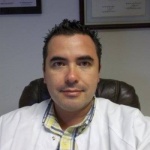 By: Dr. Elton Gómez, stem-cell expert
By: Dr. Elton Gómez, stem-cell expert
Reading time: 4 minutes
The brain is a wonderful electro-chemical machine, capable of thinking and producing ideas, and these ideas allow us to survive and progress.
However, the operation of this electrochemical machine, has a very high price, the human brain, which weighs 2% of a person’s body weight, and yet consumes 20% of the body’s nutrients, also consuming a large amount of sugar and oxygen in the process, such activity even at rest, is too much for an organ that is relatively small.
To get all the nutrients and oxygen dissolved in the blood to this organ, evolution gave us a number of very important arteries and countless extremely thin capillaries, which supply the brain and its smaller partner, the cerebellum, day and night.
These arteries are so important, that the obstruction (thromboembolism), or rupture (effusion) of one of them, in most of the cases is a catastrophic event in terms of the functionality of the brain and the entire organism.
 One of these arteries is the middle cerebral, which is important both for its location, and for the territories of the brain that irrigates, also, more than 70 percent of vascular events, such as embolisms and heart attacks, originate in the territory that waters this artery.
One of these arteries is the middle cerebral, which is important both for its location, and for the territories of the brain that irrigates, also, more than 70 percent of vascular events, such as embolisms and heart attacks, originate in the territory that waters this artery.
When there is a blockage of the blood, and this is complete, the cells are killed in the first few minutes, and the initial cerebral infarction surrounds an area where the blood does not flow well, and where the cells are suffering from lack of blood supply, this is known as “hypoxicischemic penumbra” that triggers a series of regulatory mechanisms of cell death, known as “apoptosis” that begins with the lack of energy production (ATP) in mitochondria (cellular organelles that produce energy) by the neurogliovascular unit (that is, the set of all the neurons, the other cells that surround them, and the arteries and veins that supply them) with the accumulation of free radicals, and the activation of certain genes and substances conditioned by hypoxia, such as HIF (hypoxia-induced factor) HAF (factor associated with hypoxia), and MDR alpha 1 and 2 (drug resistance factors alpha 1 and 2 respectively) that carry to a calcium intake reaction, accumulation of free radicals, and finally cell death, all caused by the low oxygen that reaches the cells, causing the penumbra area to grow in the next 24 hours after the infarction, originating more area of cell death, therefore the infarction that initially was not so big, can be very complicated in the following 24 hours.
The use of recombinant human erythropoietin (Epo) tends to stabilize the penumbra area, according to recent studies and experimental models, and the use of oxygen therapy in the hyperbaric chamber has been shown to reduce the area of cerebral infarction if it is applied in the first hours after the event, and also part of its the protocol for recovery is testing cell therapies to restore damaged cells, with very good results in the short and medium term, even in large infarctions that lead to great disability of the patient.





